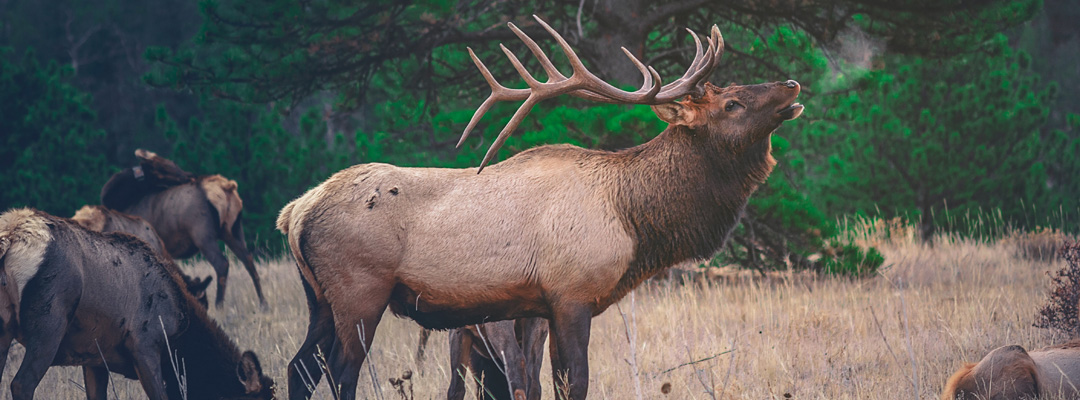
Interested in hunting Elk?
As of now elk hunting can be done in the states surrounding the Rocky Mountains. Great elk hunts can be found in Arizona and New Mexico to Idhao and into Montana, plus I can even find an adventures elk hunt in New Zealand and provinces around Canada. Try out your hunting skills and stealth while hunting elk on some of the most pristine terrain.
Get to know the Rocky Mountain Elk.
Rocky Mountain Elk have a vast presence that spans beyond the region in which these elk inherited their name, so much so, that they are also called American Elk. Found in 22 states within the United States and also a revered symbol of the great American West, Rocky Mountain elk are a part of the deer family, being the second largest subspecies behind moose. When fully matured, Rocky Mountain elk average a weight of 700 pounds, measuring 5-feet from the shoulder and maintaining a length of 8-feet from nose to tail. In addition, bulls grow into their antlers within 90 to 140 days of age, with antlers weighing 20 to 40 pounds. Their iconic and widely recognized appearance allots them a sizable audience with spectators visiting national parks and the like in order to view them, especially when rutting season begins.

When does rutting season begin?
Rutting season for the Rocking Mountain elk begins in late August and lasts until October. A notable factor of rutting season is relative to the bull who becomes subject to “bugling” or calling, which is also in relation to the process where the bull experiences swelling in the neck and shoulders as a result of built-up tension from the rut; the antlers of the bull will also develop sharper facets. After 3 years, cows are able to reproduce and enter mating season, whereas the bulls wait until their 4th or 5th year. Cows go through a gestation period that lasts 250 days, with the calves being weaned by the end of the summer. The Rocky Mountain elk will then join one of the larger herds that often consist of and are founded upon 50 to 100 elks of all genders who band together until winter, when they migrate to “summer lands” as a means of avoiding heavy snowfall.
Survival of the Rocky Mountain Elk.
Rocky Mountain elk are herbivores who survive off of the land; consuming mainly grasses, forbs, and leaves, the Rocky Mountain elk establish themselves in abundance among forests, primarily. They have predators among those who share the same landscape, such as mountain lions, gray wolves, coyotes, as well as hunters. The Rocky Mountain elk was among the many subspecies of deer who went through a rapid decline in numbers during the 1800s as a result of poor hunting stipulations. Their populations grew once ample hunting laws were founded and now, Rocky Mountain elk have elevated and steady numbers around the country.
